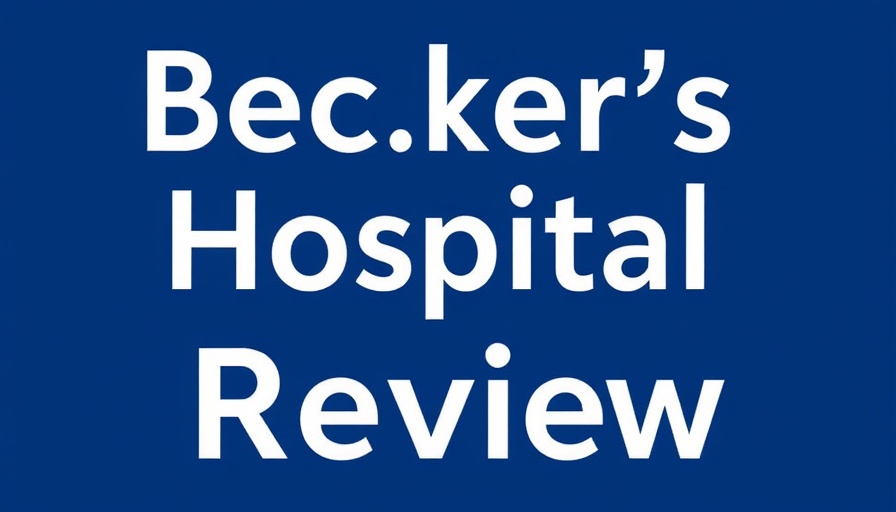
Understanding the Growing Strain on Devicemakers Amid Tariff Uncertainty
The medical device industry is currently facing significant challenges due to proposed tariffs by the Trump administration, particularly a staggering 50% tariff on all goods from the European Union. Industry leaders, such as Siemens Healthineers, are voicing concerns about the immediate and long-term effects of this economic policy on their operations, the healthcare system, and, crucially, patient care.
Direct Impacts on Medical Equipment Costs
Siemens, a prominent player in the medical device sector, has warned that these tariff measures will lead to increased costs of essential medical equipment, such as advanced scanning technologies. Jochen Schmitz, Siemens’ CFO, emphasized that the steep tariffs would largely affect imports coming from Europe, which are crucial for U.S. hospitals and clinics aiming to provide quality care.
Concerns from Health Systems and Providers
Healthcare systems are feeling the heat as a recent Bank of America survey indicated that an overwhelming 91% of hospital CFOs expect rising equipment costs due to tariffs. With nearly half predicting price increases by 2025, this foreshadows greater financial strain on hospitals and healthcare providers, potentially leading to increased healthcare costs for patients and families. Scott Whitaker, CEO of AdvaMed, noted that these tariff policies might stifle medical innovation and lead to job losses in the sector.
Impact on Patients: Reality of Delayed Access to Care
The situation becomes more concerning when considering the implications for patient care. As David Engelstätter, head of CT production at Siemens, pointed out, crucial medical services relied upon by patients may be jeopardized. The fear of being denied necessary screenings due to these external political decisions strikes a chord with many families who depend on these life-saving technologies.
Hitting Home: Real-Life Anecdotes from Healthcare Providers
In informal conversations with independent physicians and family practice doctors, many expressed frustration about how these additional costs would trickle down to healthcare consumers. Imagine a busy urgent care clinic needing to cut costs due to increased equipment prices. They might consider reducing necessary services or delaying vital treatments, profoundly impacting the lives of their patients.
Responses from Industry Leaders
GE Healthcare echoed similar sentiments; their representatives have warned that the tariffs on medical equipment could be detrimental to both their operational costs and overall patient care services. These concerns resonate with independent providers and small pharmacy owners who already operate on thin margins. The potential for rising costs can erode profitability and hinder their ability to provide affordable care solutions.
Future Predictions: Navigating Tariff Challenges
As the medical device landscape continues to evolve amid these tariffs, industry leaders and healthcare systems will need to adapt. The introduction of innovative technologies, such as voice AI agents and healthcare automation tools, may offer cost-saving avenues for clinics in overcoming the challenges posed by tariffs. Furthermore, healthcare automation could streamline processes, allowing clinics to maintain their financial viability while still providing essential services.
How Patients and Providers Can Prepare for Changes
With an understanding of the potential impacts, independent healthcare providers can begin to strategize their responses. Implementing practice revenue optimization strategies, such as pre-tax benefit plans and efficient billing processes, can play a crucial role in mitigating rising costs. More importantly, engaging patients with educational discussions regarding these changes can help them understand potential delays in services and encourage them to advocate for their healthcare needs.
Taking Action: What You Can Do
For healthcare providers, it’s crucial to collaborate, share insights, and adapt to the changing landscape. Furthermore, utilizing patient engagement tools can foster relationships, enabling medical practices to uphold patient trust during these turbulent times. The impact of tariffs may be widespread, but collective action among providers can pave the way for resilience. Consider integrating telehealth services or enhancing clinic efficiencies through the latest healthcare business tools to support both practice and patient needs.
As tariffs loom over the medical device landscape, independent providers and health systems must brace for potential impacts on costs and services. Understanding these challenges equips professionals to make informed decisions and advocate for patient-centered care.
 Add Row
Add Row  Add
Add 




Write A Comment